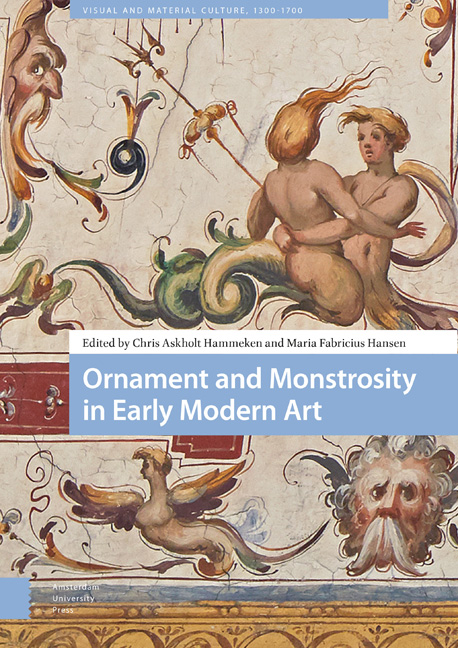8 - Ornament and Agency: Vico's Poetic Monsters
Published online by Cambridge University Press: 21 November 2020
Summary
Abstract
Horace first drew a link between ornament and monstrosity in Ars poetica, characterizing as misbegotten any attempts by ornament to claim a voice and agency of its own. Sixteenth-century artists embraced monstrous ornament, called grottesche, to do just what Horace feared: scrambling conventions and rupturing settled argument. More than an aesthetic choice, it was a means to grapple with the contests of meaning unloosed in early modern Europe. Giambattista Vico expanded upon these debates in his 1725 study The New Science, creating a theoretical armature for ornament's broader cultural agency. Vico offers insights into the deployment of ‘monstrous’ ornament by artists in the Renaissance and in subsequent periods of radical change, including Gonkar Gyatso, Yinka Shonibare, and Hew Locke.
Keywords: diaspora, emblem, grotesque, hieroglyph, ornament, poetic monsters
The link between ornament and monstrosity was forged early in Western aesthetic discourse, when Horace summoned up his famous example of a combinatory creature in Ars poetica. Significantly, the monstrosities he warned against were not the result of extravagant embellishment; in fact Horace allowed that poets might occasionally choose to ‘sew on purple patches’ for ornamental effect. Instead, he pointed to an ornament gone rogue, one that refused to stay in its place, mute and deferential. Intermixing with and subverting the argument that it is supposed to enhance, ornament turns monstrous, transmogrified into a woman out of control – fair above, foul fish below: in short, a monster of confused parts. This is not simply a vivid example set by Horace to ridicule the excesses of artistic licence. Ars poetica deploys it as a sort of talisman to ward off a breach of social decorum. Monstrous ornament is not simply in bad taste; it threatens accepted societal norms and subverts cultural traditions and hierarchies.
The disruptive cultural agency of monstrous ornament warrants more attention. It is a function of ornament that has been largely overlooked, and represents a critically important way in which sixteenth-century Renaissance artists and intellectuals forged a modern sensibility. Their embrace of monstrous ornament turned the tables on Horace's aesthetics in order to do just what he feared: to challenge the status quo by scrambling narratives, bending genres, and rupturing settled argument.
- Type
- Chapter
- Information
- Ornament and Monstrosity in Early Modern Art , pp. 221 - 242Publisher: Amsterdam University PressPrint publication year: 2019



